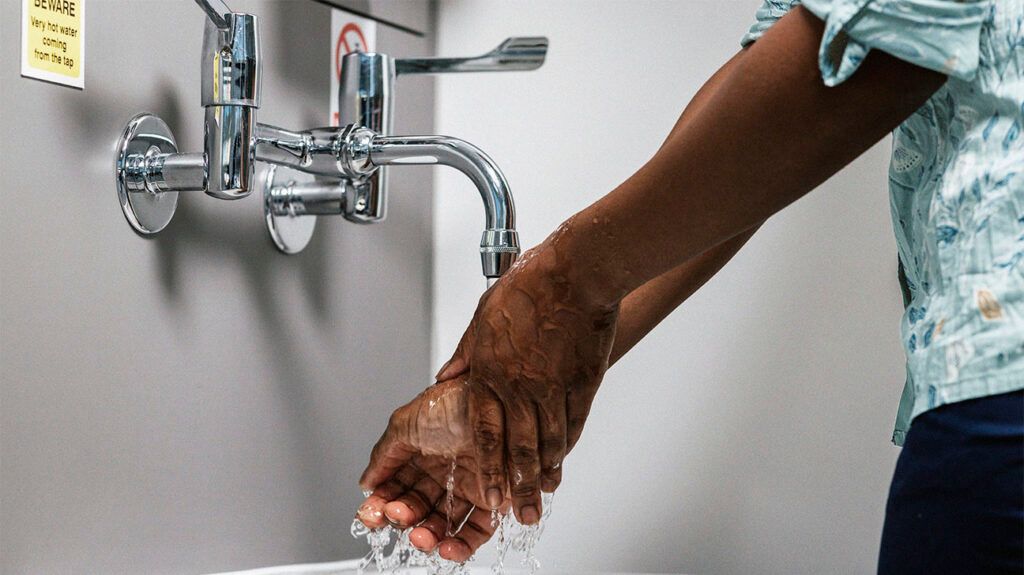Proper care for a continent ileostomy (CI) prevents complications such as infection and helps people maintain comfort before and after the procedure. Caring for a CI involves regular drainage, meticulous hygiene, and care of the skin.
A continent ileostomy (CI) is a connection at the end of the small intestine to the surface of the skin. Sometimes it is called a K-pouch. Someone living with bowel disorders may require a CI.
Proper care of a CI can help prevent complications and promote comfort.
In this article, we explore what continent ileostomy entails, how to care for it effectively, and offer comparisons between continent ileostomy and conventional ileostomy.

A continent ileostomy (CI), also known as a K-pouch, is a
Unlike a traditional ileostomy, which diverts waste into an
Someone
The purpose of continent ileostomy is to provide an alternative to external pouching systems, offering greater discretion and convenience for individuals living with bowel disorders.
Continent ileostomy vs. ileostomy
Conventional ileostomy is a popular choice for individuals with extensive bowel dysfunction or medical conditions that require immediate waste removal.
While there are differences in how and when to drain waste, some of the tips — especially when it comes to caring for the skin — can overlap with both systems.
Learn more about ileostomy.
Regularly draining can help reduce pressure in the intestines and complications.
How to drain
Draining involves inserting a catheter into the stoma to release waste from the reservoir. Draining includes the following steps:
- Wash hands: Wash hands thoroughly for
at least 20 seconds using soap and water. This helps keep germs away and prevent infections. - Put in the catheter: Gently slide the catheter into the stoma until resistance is felt. This indicates entry into the reservoir inside the body.
- Take out the catheter: Slowly pull the catheter out while letting the contents drain out into a container, such as the toilet.
- Clean the catheter: After it is completely empty, wash the catheter with warm water and mild soap. Put it away in a clean, dry spot for next time.
Correct technique and proper hygiene are essential to prevent infections and maintain pouch function.
How often to drain
The frequency of K pouch draining varies depending on individual needs and habits. Directly after the operation, a catheter will need to stay in place for approximately 14 to 21 days to allow the pouch to mature, per the United Kingdom’s Ileostomy & Internal Pouch Association.
Afterward, doctors recommend emptying the pouch when it is approximately two-thirds full, which is usually
Establishing a routine surrounding personal preferences and lifestyle can help maintain continence and prevent accidents. This may include:
- draining the pouch first thing in the morning and just before bed
- avoid eating and drinking within 2 hours of going to sleep
- setting the catheter to constant drainage during the night
Regular care of the catheter and surrounding skin is vital to prevent complications such as infection and irritation.
Catheter care
The following steps indicate how to take care of a catheter:
- Rinse the catheter with warm water and mild soap after each use to remove any residue and bacteria.
- Thoroughly dry the catheter before storage to prevent mold growth and degradation.
- Inspect the catheter regularly for signs of wear and tear, replacing it as needed to ensure proper function and hygiene.
Skin care
The following steps explain how to take care of the skin around the stoma:
- Keep the skin around the stoma clean and dry to prevent irritation and infection.
- Gently cleanse the area with warm water and a mild, perfume-free soap, avoiding harsh chemicals and abrasive materials.
- Pat the skin dry with a soft towel and apply a protective barrier cream or powder to reduce friction.
Regularly inspect the skin for signs of redness, inflammation, or breakdown, getting medical attention if abnormalities occur.
Some other tips for taking care of a K-pouch include:
- Low residue diet: Maintain a balanced diet and avoid high residue foods that may cause gas, odor, or blockages, such as raw vegetables, nuts, and seeds.
- Hydration: Drink plenty of water throughout the day to prevent dehydration and maintain electrolyte balance. Limit intake of caffeine and alcoholic beverages, as they can increase urine output and increase dehydration.
- Exercise: Engage in regular physical activity to help improve bowel function, reducing the risk of constipation and pouch dysfunction. Choose low impact exercises such as walking, swimming, or yoga to help avoid strain and discomfort.
After a continent ileostomy (CI) procedure, a person should drain the pouch and care for the skin surrounding the stoma.
By following proper techniques for draining the pouch, catheter care, and skin hygiene, individuals can minimize complications and enjoy a better quality of life.
